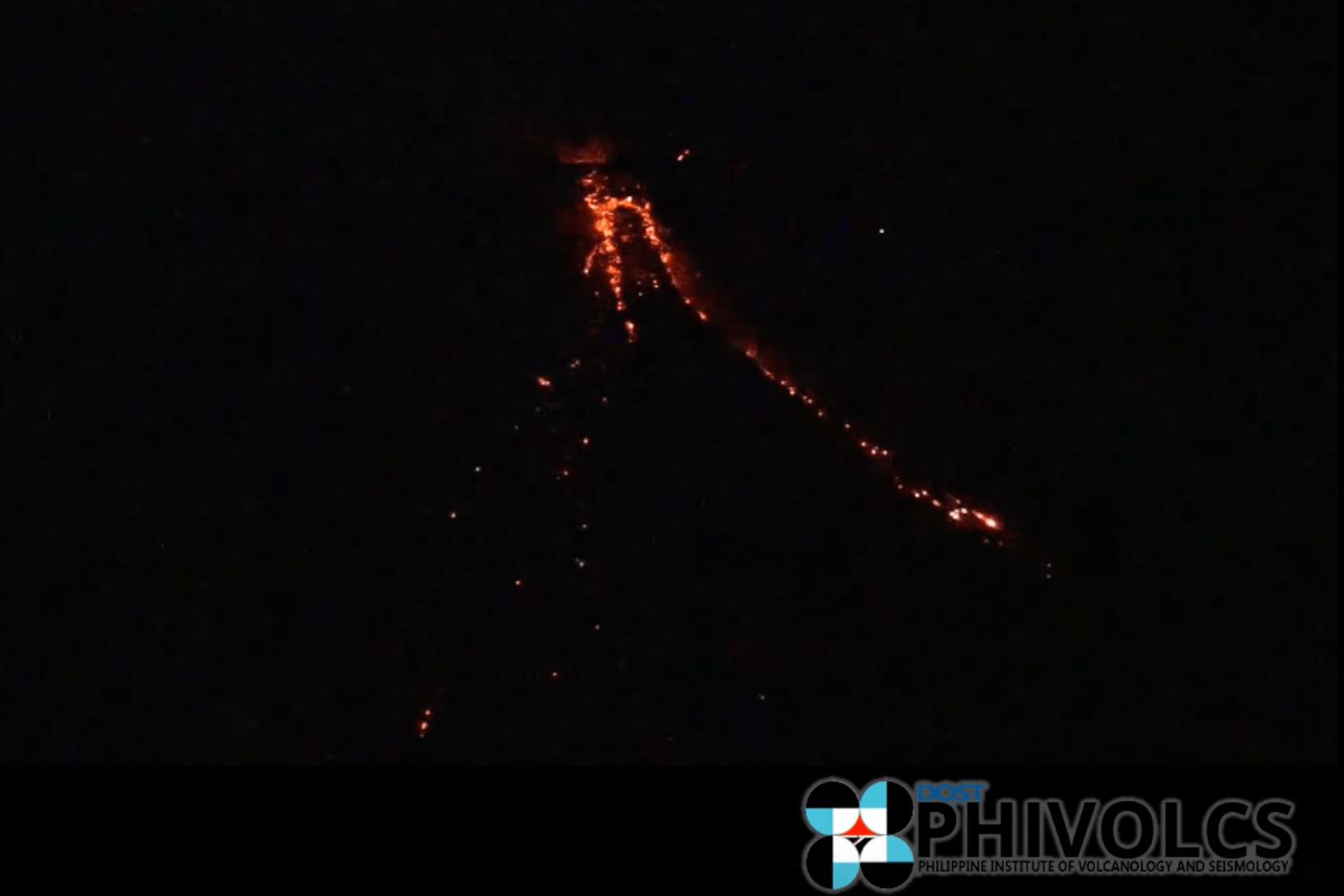SUMMARY
This is AI generated summarization, which may have errors. For context, always refer to the full article.

MANILA, Philippines – State volcanologists lowered the status of Albay province’s Mayon Volcano to Alert Level 2 on Friday, December 8, which means it has eased to a “moderate level of unrest.”
The downgrade came six months after Mayon was raised to Alert Level 3 on June 8 due to an “increased tendency towards a hazardous eruption.”
The Philippine Institute of Volcanology and Seismology (Phivolcs) said in a bulletin on Friday morning that it has recorded “a general decline in unrest” since November.
For instance, volcanic earthquakes decreased from a monthly average of 11 per day in November to nearly zero per day in the first week of December.
Rockfalls also went down from 122 to 87 per day and pyroclastic density currents (PDCs) from 5 to 2 per day between October and November, then to virtually none in the first week of December.
“These decreases indicate that magma supply to the summit crater has significantly diminished, resulting in the cessation of lava effusion from the crater and lava collapse-driven rockfall and PDC activity,” Phivolcs said.
There has also been “lessening incandescence” or glow of the summit crater and of the 2023 lava flow deposits since the last week of November.
In the July-August period, lava flows on the Mi-isi, Bonga, and Basud gullies had advanced to distances of 2.8 kilometers, 3.4 kilometers, and 1.1 kilometers, respectively, from the summit crater.
Phivolcs said the newest lava deposit has rested on the Bonga Gully since November 23, just within 400 meters of the crater.
“The total volume of erupted deposits has therefore remained at approximately 49 million cubic meters since then,” added the agency.
SO2 emission, ground deformation
Meanwhile, sulfur dioxide (SO2) emission had peaked at 4,756 tons per day on August 16 “and has since been decreasing and increasing in cycles of generally lessened peaks,” according to Phivolcs.
The monthly average SO2 emission increased from 1,173 to 1,417 tons per day between October and November, then fell to 1,095 tons per day in the first week of December.
On Thursday, December 7, it was at 859 tons per day.
In terms of ground deformation, Phivolcs noted that Mayon’s edifice remains generally inflated or swollen “due to magma intrusion,” or movement of magma beneath the surface, that has occurred since the unrest escalated in June.
“The lowering of the alert status should not be interpreted to mean that the volcano’s unrest has ceased, considering that the edifice is still inflated and SO2 emission remains high relative to baseline levels,” the agency warned.
Phivolcs reminded the public that entry into the 6-kilometer-radius permanent danger zone surrounding Mayon should still be prohibited “to minimize risks from sudden explosions, rockfalls, and landslides.” – Rappler.com
Add a comment
How does this make you feel?










There are no comments yet. Add your comment to start the conversation.